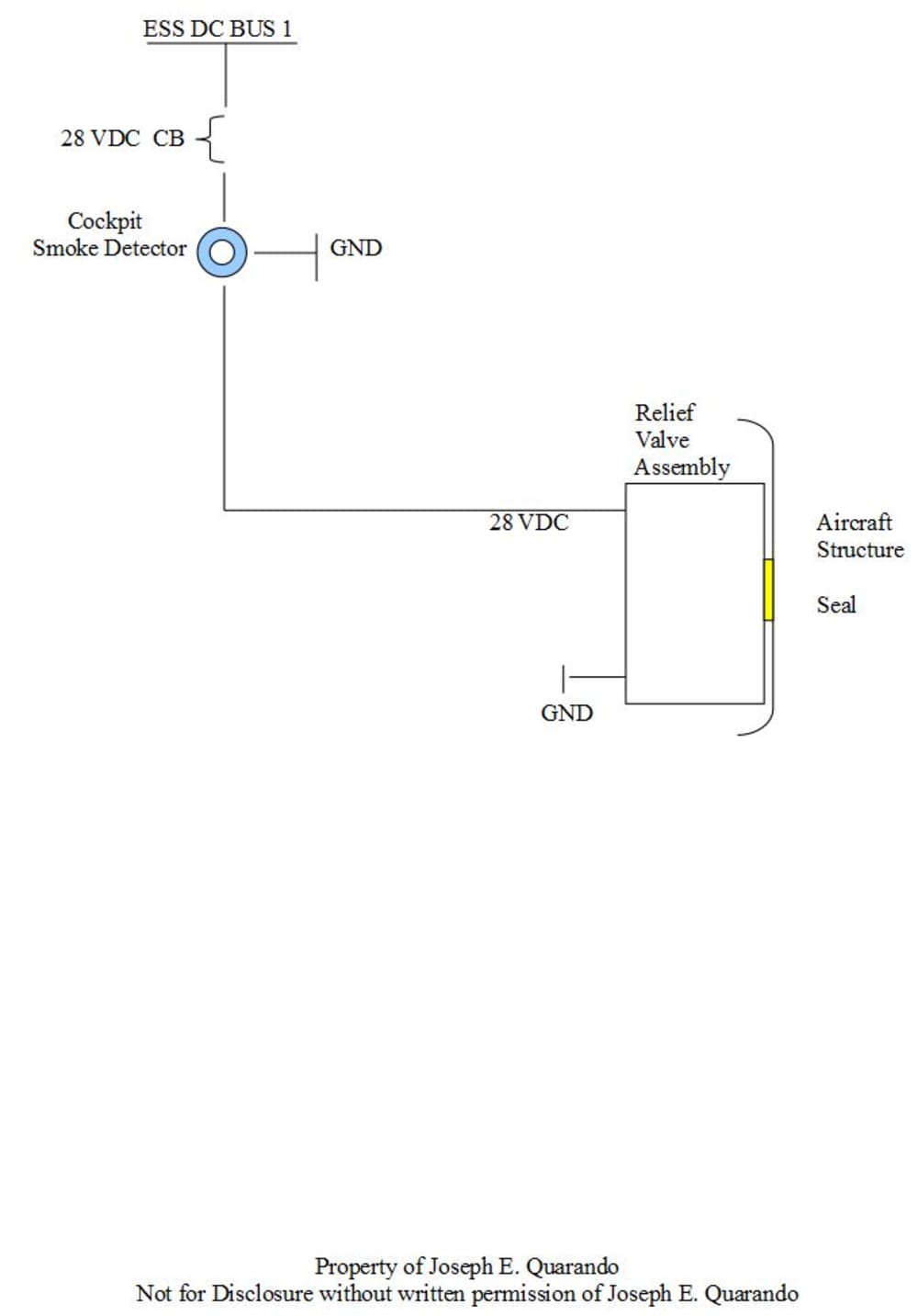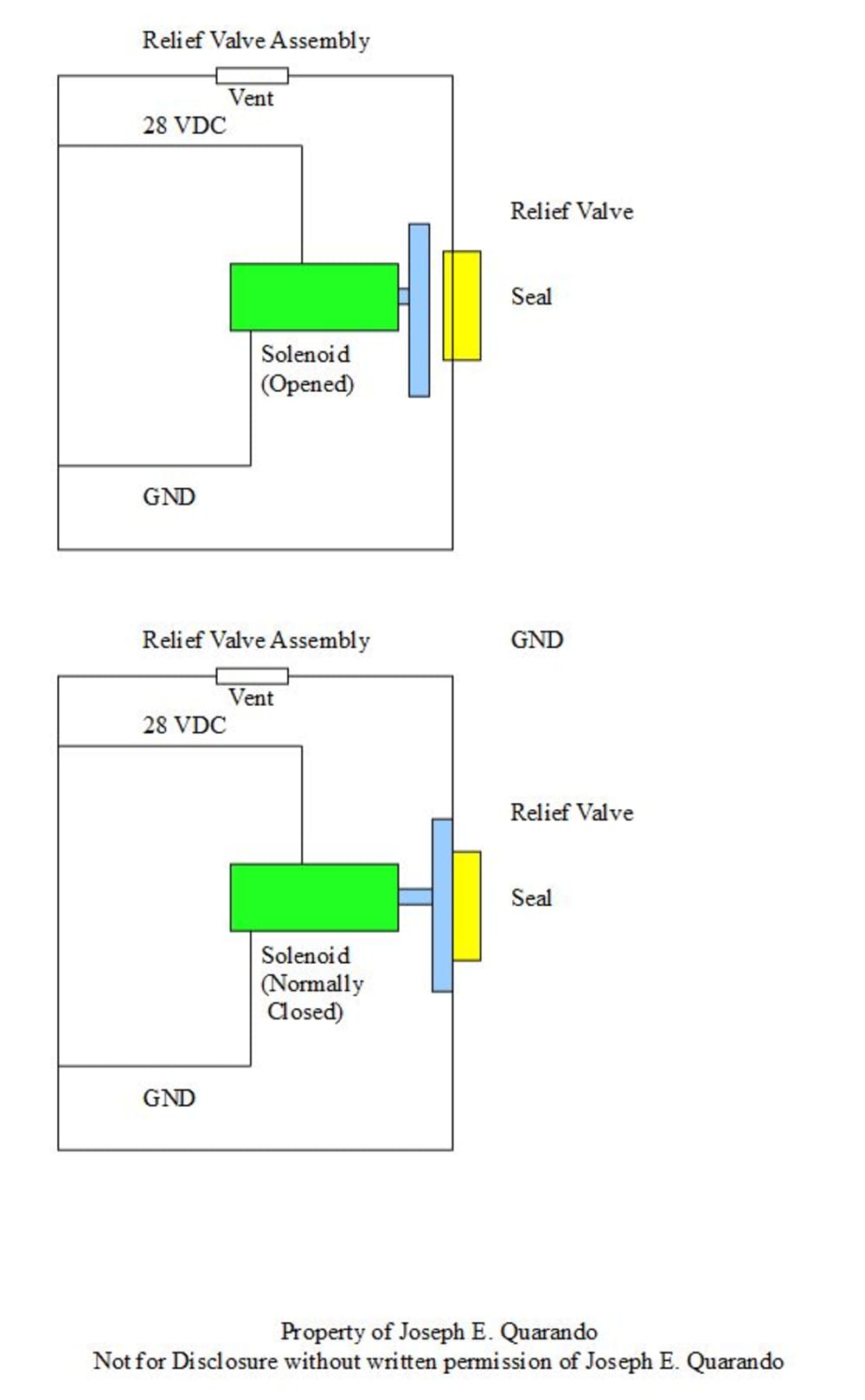How it works:
When smoke is detected by a smoke detector, similar to those located in the lavatories, and now located in the cockpit, power is applied to the Relief Valve Assembly/solenoid which opens a pathway to the outside atmosphere. As the cockpit is pressurized as well as the passenger compartment, the smoke in the cockpit will be pushed out into the atmosphere. This, along with the air flow over the surface of the fuselage, will aid in creating a vacuum and further draw smoke out of the cockpit. Once the smoke clears and the detector is reset, the Relief Valve Assembly/solenoid will close, sealing the opening in the cockpit allowing pressurization to resume.
The opening does not have to be large, no more than ½ inch in diameter. An opening of this size is of no consequence to the aircraft pressurization system and it can compensate for the opening. To eliminate damage to the fuselage, the area around the opening would have a doubler installed strengthening the area.
Like this entry?
-
About the Entrant
- Name:Joseph Quarando
- Type of entry:individual
- Software used for this entry:In concept phase at this time
- Patent status:none





